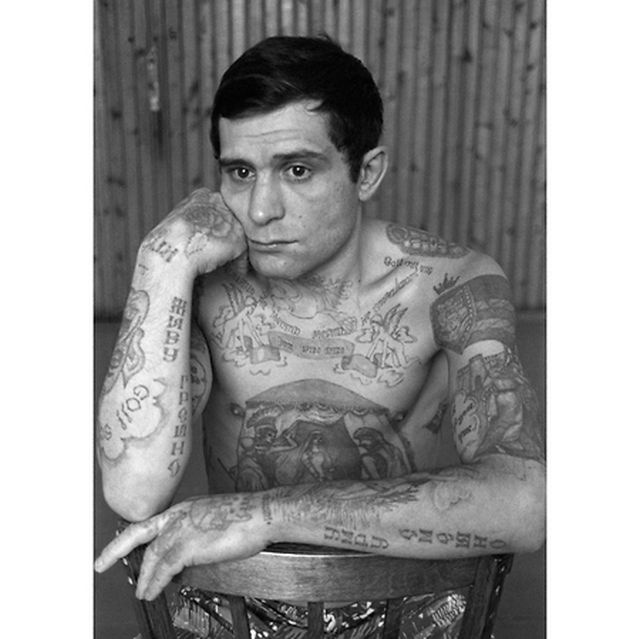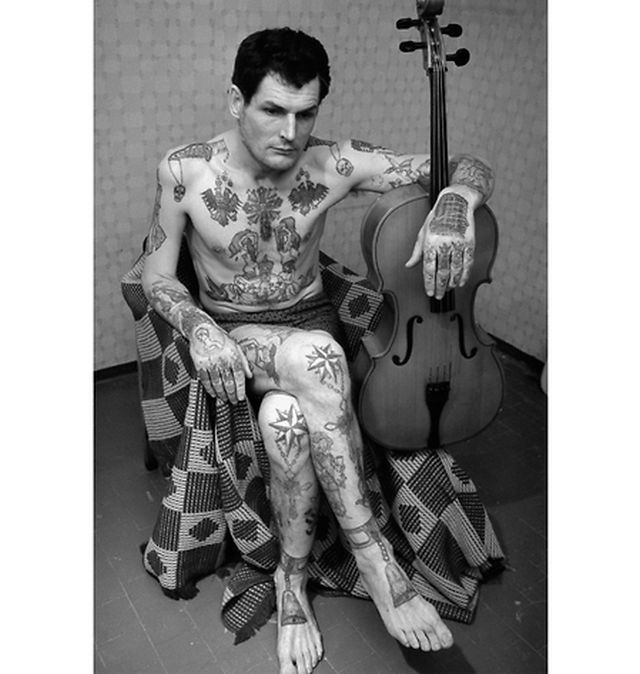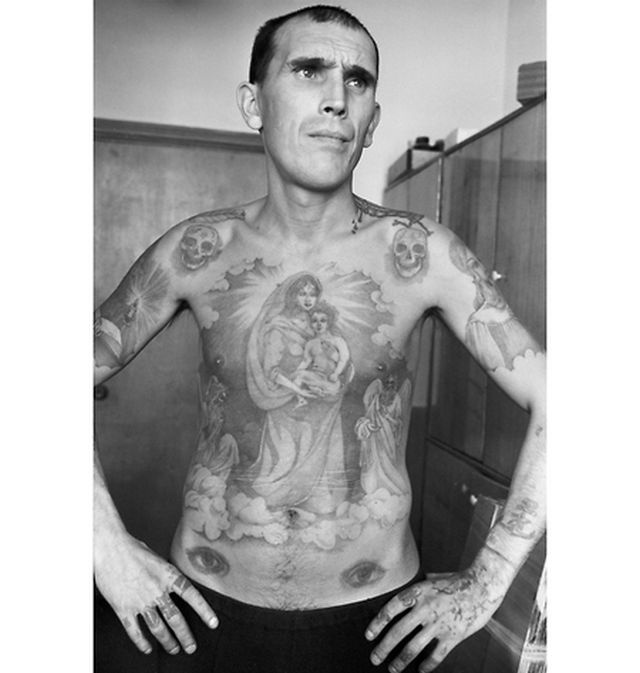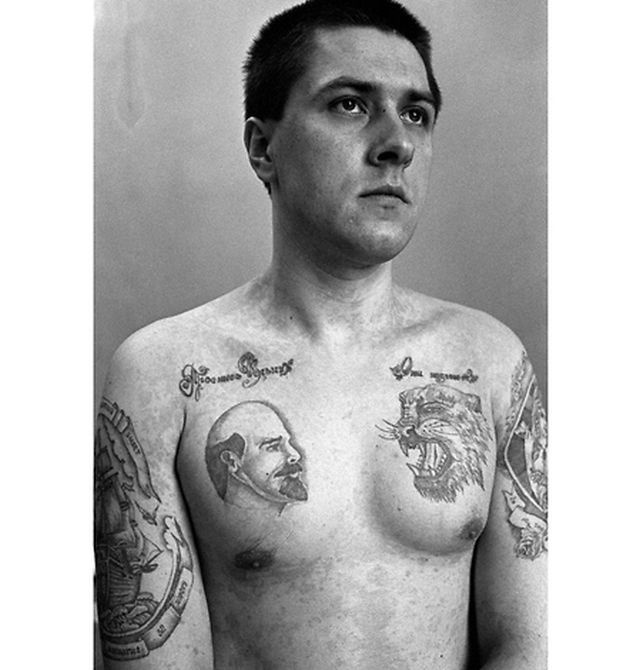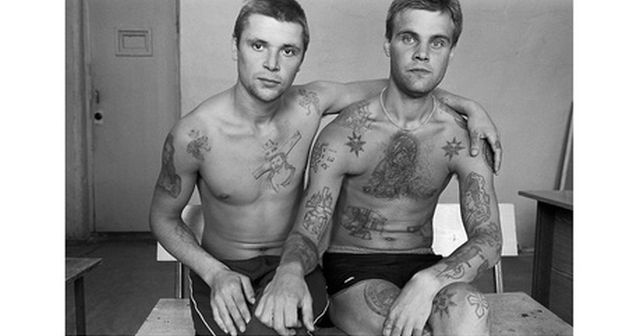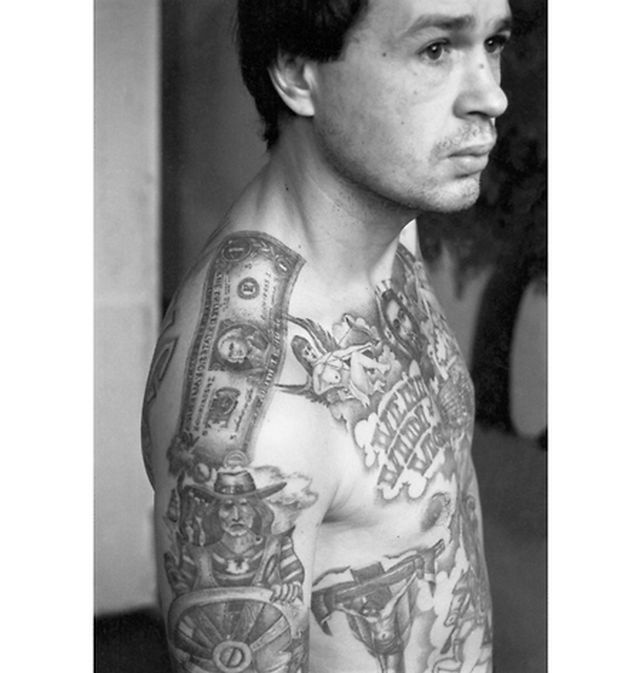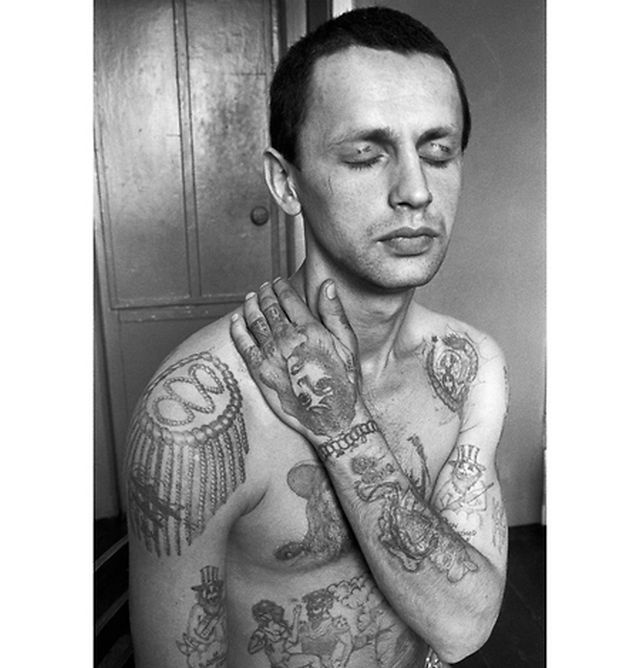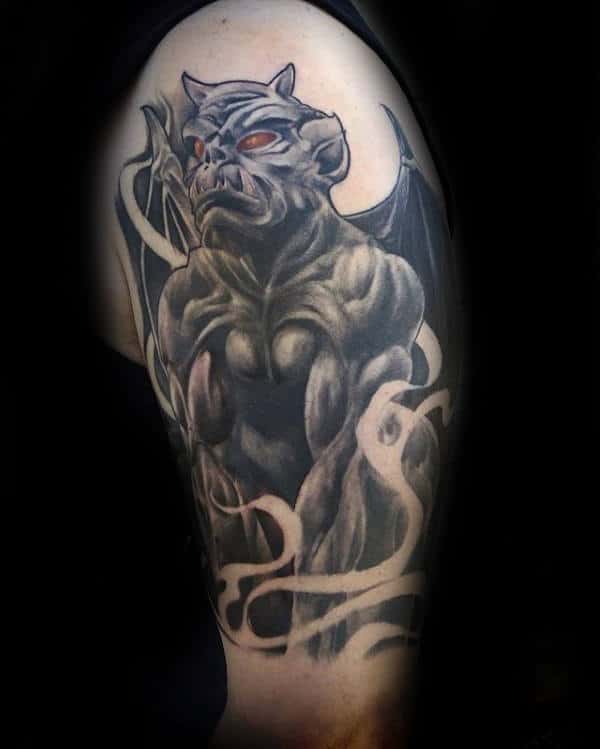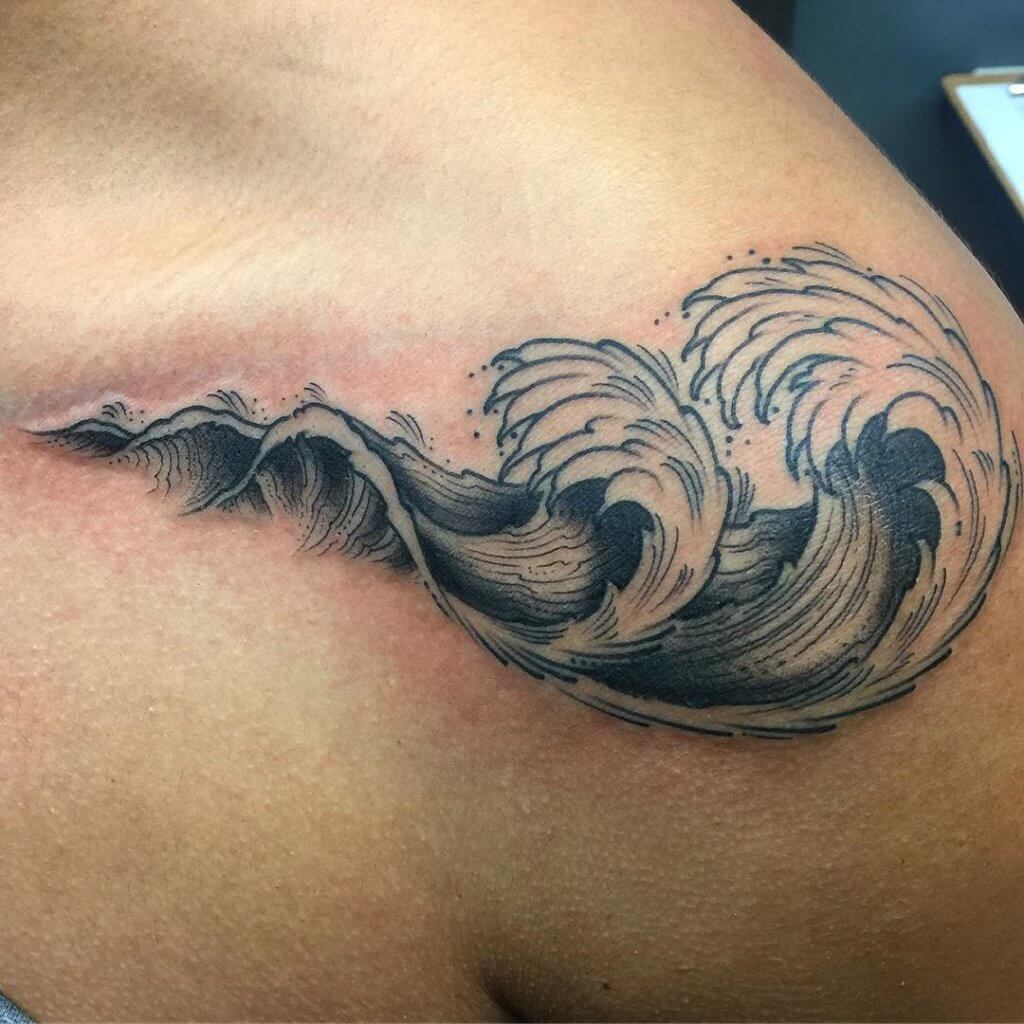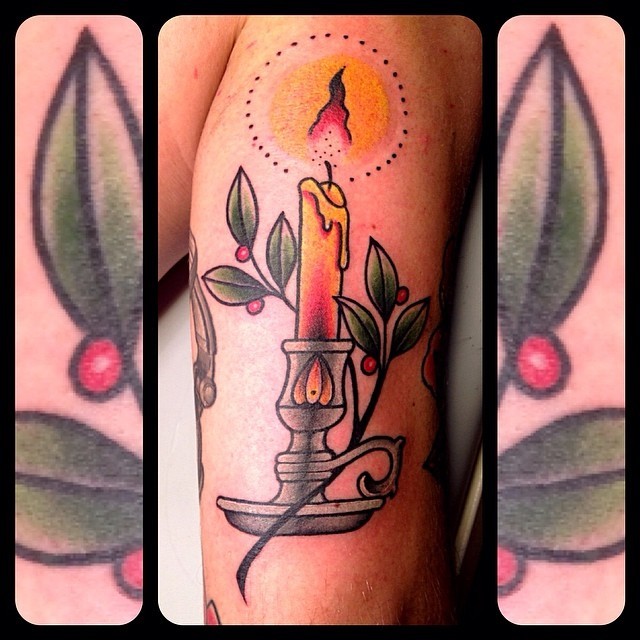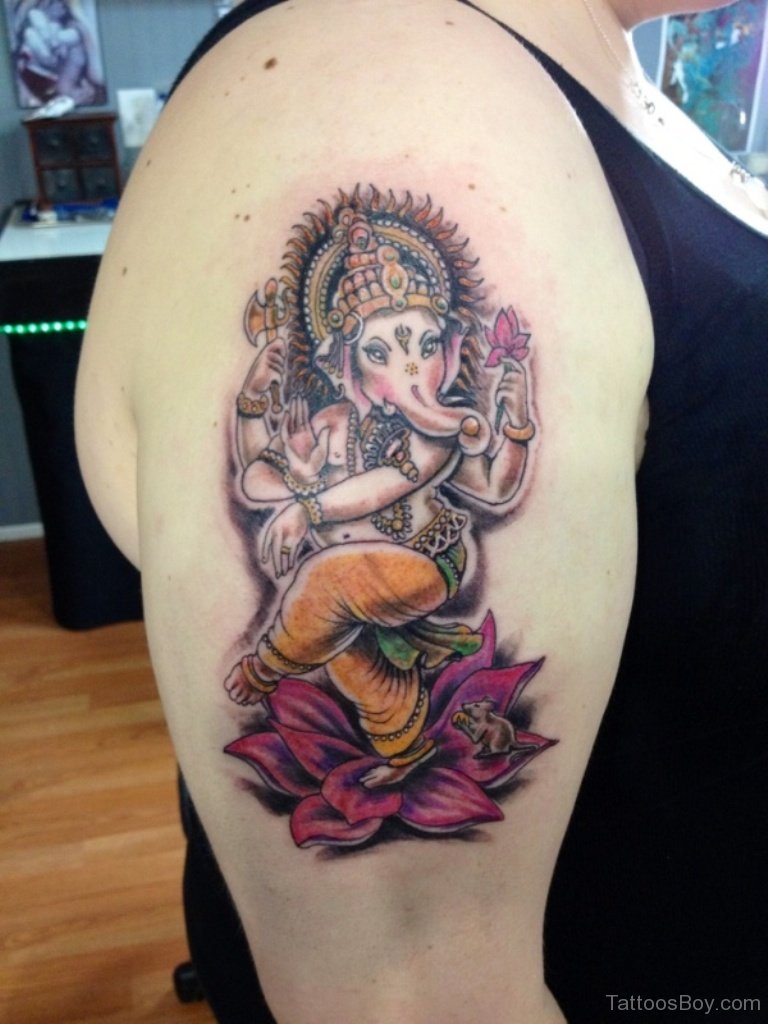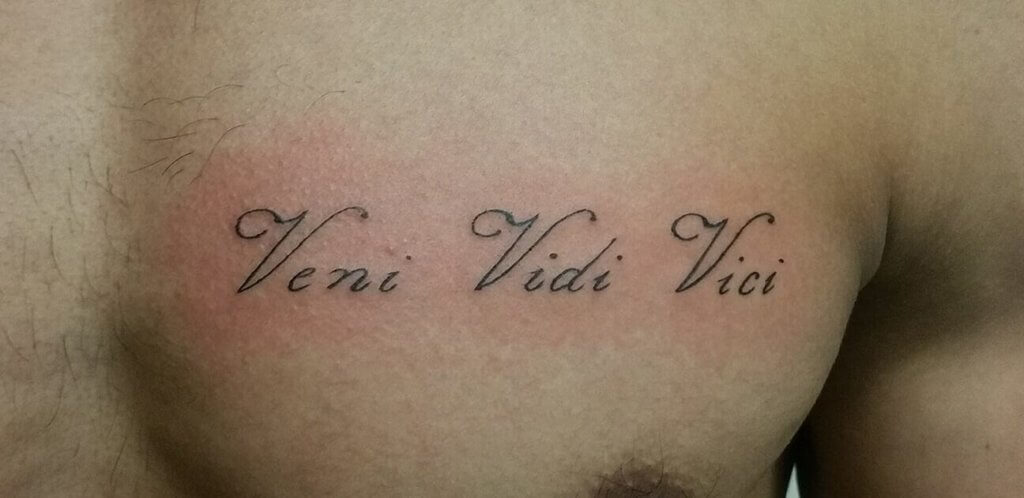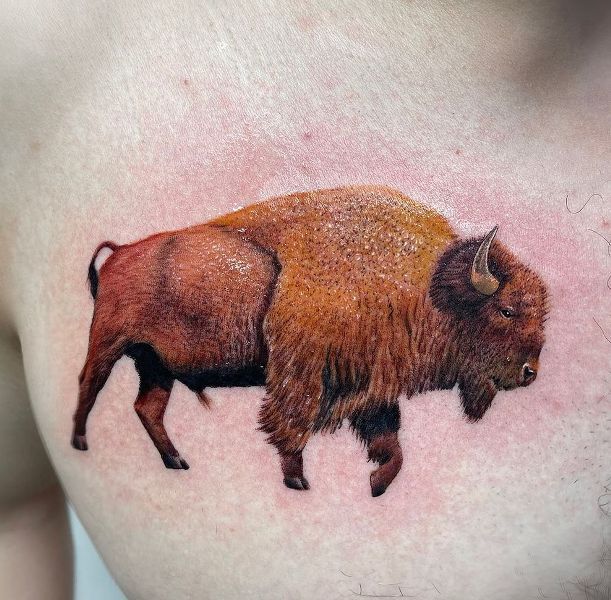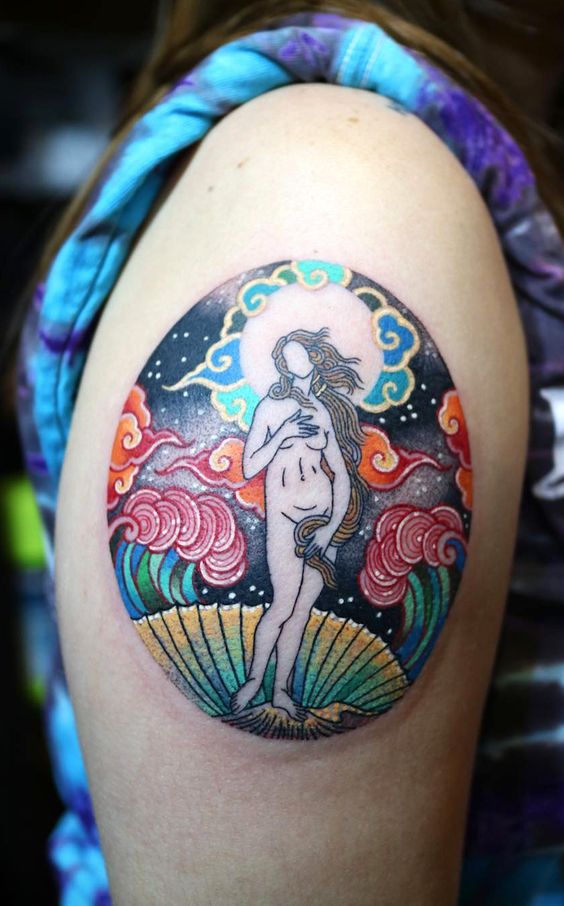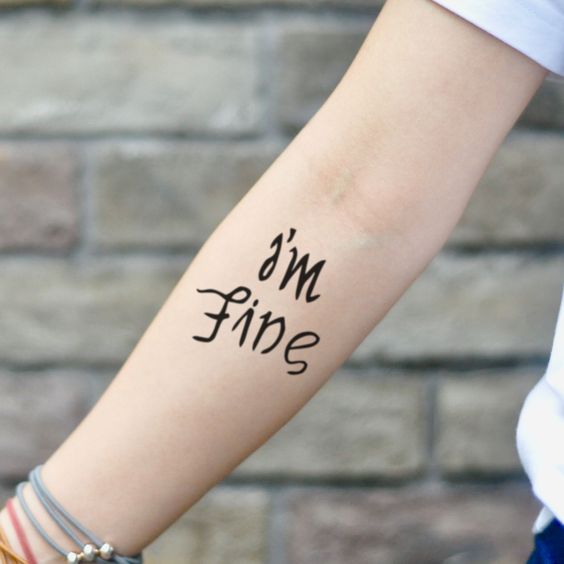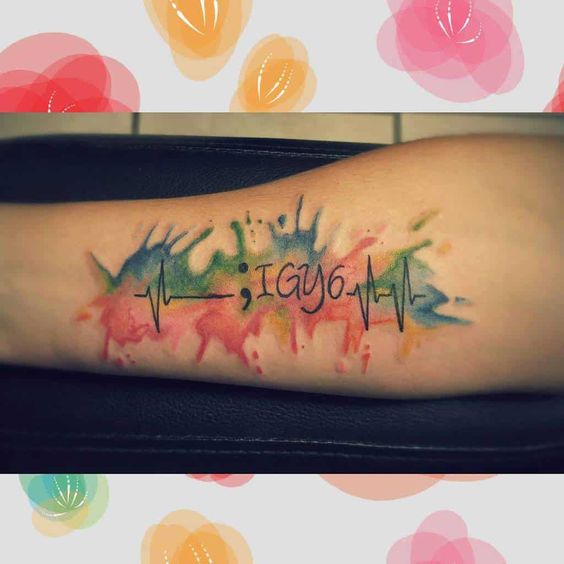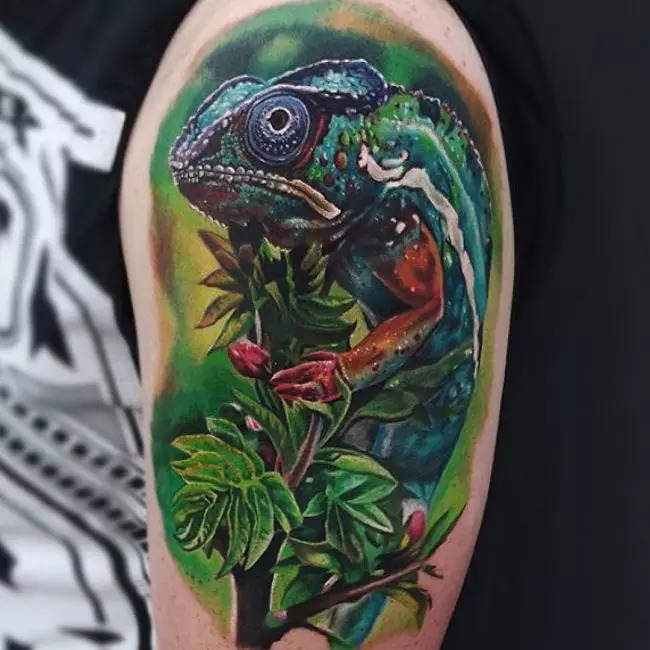Tattoos of Russian Criminals: A Fascinating Insight
The tattoos of Russian criminals are not merely decorative. They serve as a coded language, providing insider information about the wearer’s criminal background, hierarchy, and experiences. In this article, we dive into seven such tattoos that are both iconic and deeply symbolic. See what tattoos mean.
The convict’s tattoos essentially map his entire life. They record what crimes he committed, how he climbed the ranking in the criminal hierarchy, how many times he sat in prison, what successes he had achieved. In the crime world, a tattooless man has virtually no social status.
The Meaning of A Prisoner’s Intricate Tattoos
The tattooed inscriptions on this prisoner’s chest serve as a window into his mindset and possibly his life experiences. “Death is not revenge / the dead do not suffer,” reads one tattoo on his chest. This inked phrase suggests a certain stoicism, a resignation to the inevitability of death and its impartiality. It speaks volumes about the prisoner’s views on mortality and revenge, hinting that he believes once someone is dead, the suffering ends, negating the effectiveness of revenge.
On the flip side, another tattoo states, “I live in sin / die with laughter.” This tattoo seems to capture a contrasting spirit, one that relishes life’s vices and the act of living itself. The phrase shows a form of dark humor, perhaps indicating that the prisoner finds a sort of twisted joy in his circumstances or choices. It’s as if he embraces the sins or wrongdoings in his life, finding them not just tolerable but amusing.
These tattoos, combined, form a complex narrative. They suggest a person who lives with duality: one who is at once resigned to life’s harsh realities and yet finds a way to derive some form of joy or laughter from them. Both statements serve as a sort of life philosophy, written on skin instead of paper, that may give us insights into the complexities of his life journey.
Decoding the Symbolism: Meaning of A Convict’s Array of Tattoos
The intriguing tattoos adorning this man’s body serve as coded messages, divulging critical information about his past actions and state of mind. For instance, a dagger pointing toward his neck signifies a harrowing reality: the man has committed murder while incarcerated and is open to committing another. This particular tattoo serves as a chilling advertisement of his abilities and willingness to carry out lethal tasks.
Adding to this, bells inked on his feet mark a significant milestone. They indicate that the individual has served his entire sentence. Likewise, shackles signify he has spent over five years in prison, denoting a long-term engagement with the penal system.
Stars tattooed on his knees pack another punch of symbolism. They declare, “I’m not kneeling in front of the cops,” displaying a defiant stance toward authority. Each tattoo, then, contributes to a vivid narrative, telling us not just where this man has been, but how he sees himself in relation to the world around him.
Inked Chronicles: Meaning of Mikhail Kovanev’s Body Art
Mikhail Kovanev was more than just an inmate; he was a poet, artist, and musician who served a 15-year sentence for murder. His tattoos serve as a canvas chronicling his complex life and personal journey, most of which he meticulously designed himself. Notably, the twin eyes tattooed on his stomach are particularly revealing, indicating his sexual orientation as homosexual.
However, his life took several darker turns during his time behind bars. Kovanev fell into the perilous grip of drug addiction, a struggle that likely exacerbated his already challenging circumstances in prison. Tragically, the arc of his life concluded in an untimely manner: he was murdered, adding a final, bleak chapter to his story. Each tattoo, in its own way, stands as a lasting testament to a life marked by both creativity and turmoil.
Inked Politics: Tattoos of Russian Criminals and Their Unexpected Shield
In the realm of Russian prison tattoos, the ink serves more than just a decorative purpose. Fascinatingly, tattoos of Lenin and Stalin were known to offer a rather unconventional form of protection. These political icons were so revered during the era of socialism that their images were thought to act as a shield against execution by firing squad.
It is believed that the soldiers who were to carry out the sentence found themselves unable to pull the trigger. Shooting their leaders, even in effigy, was considered an unconscionable act. In this manner, the tattoos became not just a statement of political allegiance but also a strategy for survival. It is a powerful example of how imagery and symbolism can hold real-world consequences, even in the dark corners of a prison cell.
The Spider’s Climb: Intricate Meanings in Tattoos of Russian Criminals
Within the dark corridors of Russian prison culture, the tattoos that inmates bear often speak a language of their own. Take, for instance, the tattoo of a spider in a cobweb. This particular design can possess dual meanings depending on the orientation of the spider.
When the spider is tattooed as climbing upwards, it indicates that the individual wearing it is still invested in the criminal lifestyle and has no intentions of quitting. On the flip side, if the spider points downwards, the meaning shifts drastically. This positioning suggests that the person is looking for a way out, perhaps contemplating leaving the criminal life behind.
Thus, a seemingly simple design like a spider can carry significant implications about one’s standing and intentions within the criminal underworld. Indeed, these tattoos serve as a nuanced language, revealing layers of meaning to those who know how to interpret them.
The Dollar Bill Ink: Meaning of Commitment in Soviet Prison Tattoos
In the Soviet Union, prison tattoos were more than just ink on skin; they were a coded language. It was a widely held belief among inmates that the best tattoo artists could be found in the Ural prison facilities. Many inmates even aimed to serve part of their sentence there, solely to acquire a tattoo from those reputed craftsmen.
One notable design is the tattoo of a dollar bill. On the surface, it might seem like a simple tribute to capitalism or materialism. However, within the context of Soviet prison life, this design signifies an irrevocable commitment to the criminal underworld. When an inmate chooses to have a dollar bill tattooed onto their skin, they are making a public declaration. They are saying, unequivocally, that they have chosen a life of crime, and there’s no turning back. This tattoo, therefore, is not just art but a solemn vow.
The Perilous ‘Don’t Wake Me’: Meaning of Eyelid Tattoos
Tattooing the eyelids is a high-stakes endeavor, not for the faint-hearted. The needle’s proximity to the eye means a single mistake can result in irreversible damage. Yet, this man has dared to tattoo “Don’t Wake Me” on his eyelids. It’s not just a random choice of location or words. The phrase symbolizes a deeper sentiment. It could mean he desires eternal rest or perhaps he’s commenting on the metaphorical sleep of his imprisoned state. This audacious tattoo captures attention, underlining his disdain for societal norms. Moreover, it serves as a window into his complex, defiant nature.
Conclusion
Unquestionably, the tattoos of Russian criminals are a world unto themselves. They reveal much more than aesthetic preferences: each inked symbol serves as a narrative, a rank, or a warning. Understanding these tattoos provides a compelling window into the underworld of Russian organized crime.
